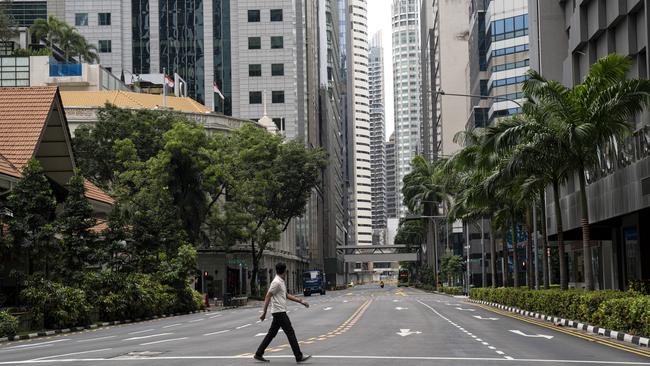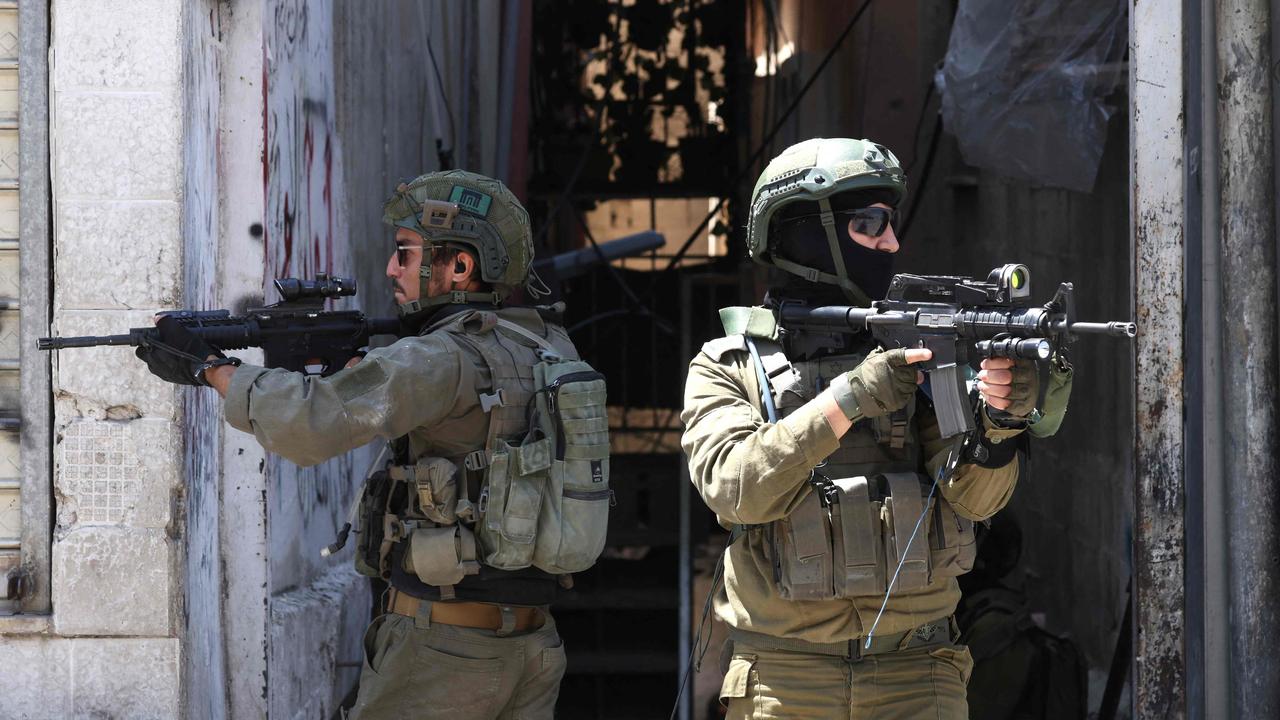Coronavirus: Singapore faces up to shutdown reality
Singapore’s skyline is still. The herds of cranes that have for decades symbolised the rude health of Southeast Asia’s prototype economy are quiet.

Singapore’s skyline is still. The herds of cranes that have for decades symbolised the rude health of Southeast Asia’s prototype economy are quiet. The planes are grounded. Now, too, the city state’s industrious population has retreated behind their doors.
Just as the chains finally came off Wuhan, the Chinese city from which the COVID-19 pandemic has spread across the globe, Singapore has had to enforce a lockdown it tried so hard to avoid as its COVID-19 case tally passes 1500.
On Tuesday, all but essential businesses — in Singapore, financial services are among those considered critical — closed their doors, leaving the usually bustling CBD eerily quiet as the government began enforcing a “circuit breaker” to slow the relentlessly aggressive second wave of COVID-19 infections.
As of Wednesday, the schools were also shut, locking millions of workers at home in small apartments with their children, as has happened in so many of the world’s major cities.
It is a bitter pill given the global kudos Singapore received for its early measures — widespread testing, aggressive contact tracing, border closures — to stem the virus’s spread.
“We are fighting on the health front, but there’s also a huge economic cost. The measures we take, we know that this fight, certainly the economic fight, will be for a very long time,” Singapore Home Affairs Minister K. Shanmugam warned on Wednesday as he explained a third package of relief measures.
“You’re looking at economic devastation. Businesses destroyed, people’s lives ruined.”
The Singapore government has now announced three stimulus packages worth a total of $S59.9bn ($68.4bn), to keep businesses and households afloat during the crisis. But there has been less protection for the city state’s army of migrant workers who man the docks, airfields and construction sites and who now find themselves locked in mega dormitories that have become the latest hotspots for the virus.
About 30,000 migrant workers have been ordered into total lockdown since Sunday, some in dormitories with 12 or more to a room, prompting warnings of a “perfect storm for massive rapid infection”.
Already close to 200 foreign workers linked to seven dormitories and dozens of construction sites have tested positive for COVID-19, and rights groups say there are likely to be many more asymptomatic cases where workers have been confined to their rooms under police guard.
Migrant workers make up about one-sixth of Singapore’s population of 5.7 million, and as many as 200,000 of them sleep in dormitories such as S11, Westlite and Toh Guan, which have all been gazetted in recent days.
Groups such as the Humanitarian Organisation for Migration Economics are now urging the government to do more — including wide-scale testing within the facilities — to protect the thousands of vulnerable labourers who helped build the modern city state.
HOME spokeswoman Desiree Leong told The Australian that while some early lockdown problems had been largely ironed out, “the bigger issue for the workers who are now being confined is fear of asymptomatic transmission”.
“Those with symptoms are being isolated or taken for treatment but other than that the only control measures are that everyone should stay in their rooms.”
Singapore’s housing development ministry said on Wednesday it was refurbishing vacant public housing blocks to house healthy foreign workers.
The problem is not peculiar to Singapore, however, with Malaysia also placing several large migrant-worker dormitories in lockdown after identifying COVID-19 clusters among them.
Malaysia’s month-long Movement Control Order is due to end next Wednesday, though the government will decide on Friday whether to extend it to the end of April, as Philippines President Rodrigo Duterte has done with the lockdown of 57 million people on Luzon island.
Indonesia, too, is bracing for the return of thousands of migrant workers ahead of next month’s Muslim Idul Fitri holiday in which about 20 million people return to their villages and towns in a mass movement known as mudik.
The government has refused to ban the mudik this year but has urged people not to go home for the holidays and imposed quarantine orders and public transport restrictions on those who do so.



